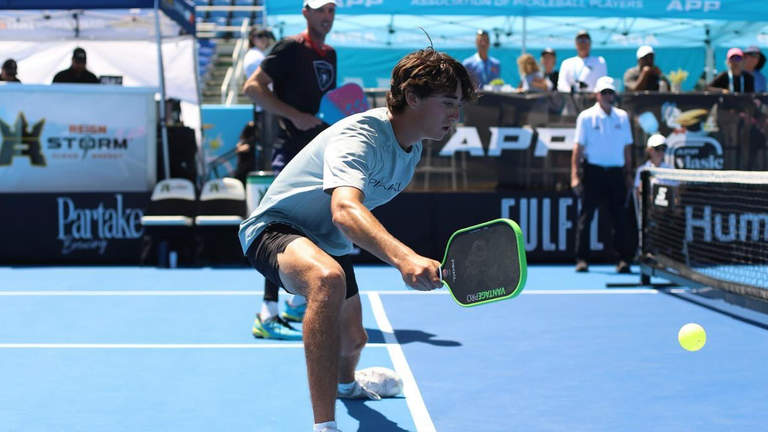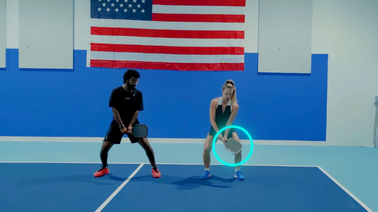
Anticipation is everything in pickleball. Use these three pro-proven scenarios to read your opponents and put yourself in a position to make a high percentage, winning play.
Knowing shot patterns is the key to advancing in pickleball.
It’s not enough to hit one good shot. Much like a chess game, you need to be thinking multiple moves ahead. Check out these shot combinations that you can employ over and over to win more points.
Love pickleball? Then you'll love our free newsletter. We send the latest news, tips, and highlights for free each week.
1. Speeding up Down the Line and Covering Middle
Let me begin by saying that when speeding up, the location of the speed-up is everything. For this pattern, let’s assume you are playing the left. As you are dinking, use your dinks to eventually get a ball you can speed up.
For this specific pattern, I like to roll my backhand dink to the middle of the kitchen, or to the left foot of the right-side player opposite of me. Once I get a ball I feel good about speeding up, I will take my backhand and aim for the right side player across from me, targeting their right hip.
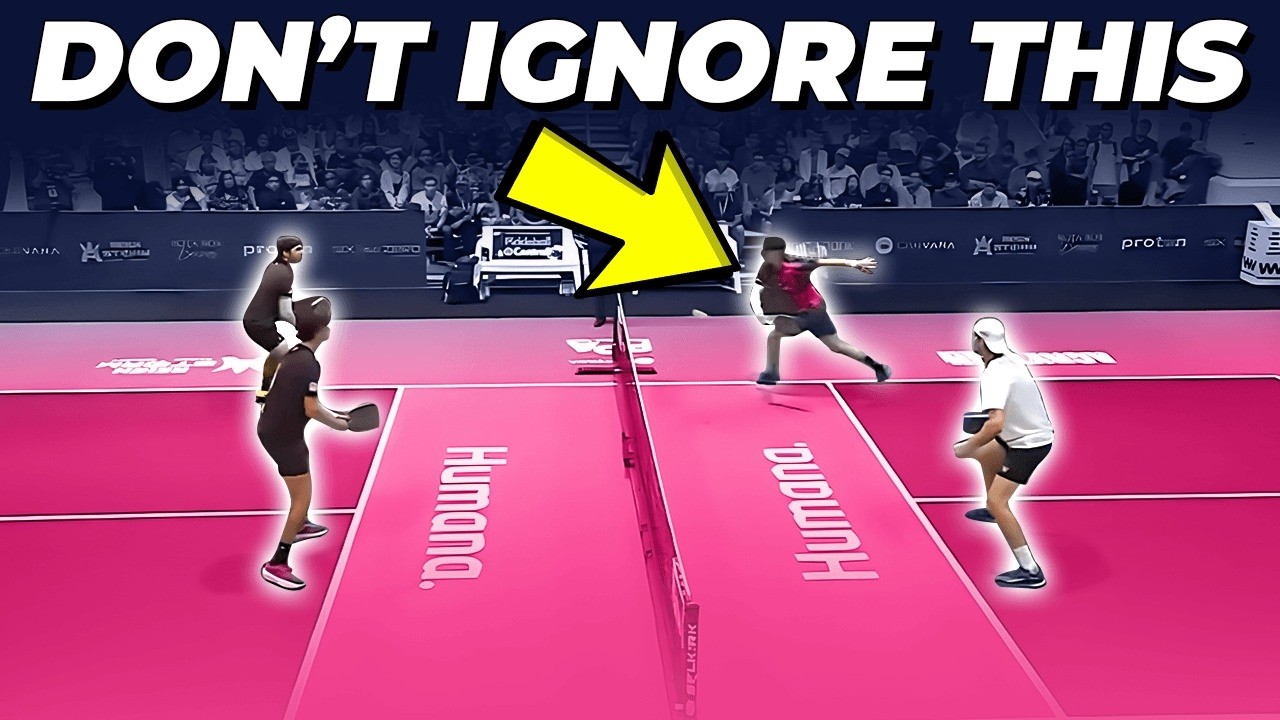
Once I hit this first shot, I immediately move to cover the middle of the court, as this is the most likely spot for them to counter or reset to.
One key thing to remember when planning multiple shots ahead: your first shot must be hit when you are stationary. I frequently will try to move to the spot of the next shot before I am done executing my first shot.
Moving too early to hit the next shot will compromise the accuracy and target of your first shot, which will make it less effective.
One other caveat: hitting your right-side opponents’ right side hip and then covering middle is the highest percentage play.
This is not to say your opponent can’t counter or reset back down the line, but that shot is much more difficult to execute. That’s why location is so key in this strategy.
- If your speed up is high and in the strike zone of their forehand counter, they will be more likely to do whatever they want with the ball.
- If it is lower and accurately placed at their right hip, covering the middle in anticipation of the next ball will likely be successful.
The idea of planning ahead is to give yourself the highest percentage to be in the right percentage to make a winning play. The better your opponent, the
more variety and ability they will have when defending your speed-ups.
2. Third shot dropping or diving cross-court to set up your partner to poach
Fellow pro player Jim Dobran and I made a living off this two-shot strategy in 2023.
For this scenario, and to add some variety, let’s assume I am playing the right side.
- When my opponents’ return comes to me, I aim to drop or drive the third through the middle towards the opponent on the right side, aiming for his left hip or backhand side.
- This will allow my partner on the left side to move forward and then to their right, anticipating a fourth shot towards the middle of the court.
- My partner can then pinch towards the middle of the court and look to poach the fifth shot.
This will only work if the third-shot drop or drive is low, causing your opponent on the right side to have to hit a low volley or even half-volley off the ground.
Another key is timing from your partner on the poach.
- If you partner leaves too early and doesn’t close off the line (if they go in a diagonal line from the baseline to the middle of the court), your opponent will be able to see them poaching and hit the ball down the line.
- Your partner must make the letter L in their poaching path. They must go forward first, in line with the right-side opponent.
- Then, as your opponent is hitting the fourth shot volley, your partner (who by this time is somewhere close to the kitchen line) can then make a right-angle move to the right.
If timed correctly, this two-shot anticipatory move can cause a lot of issues for your opponents.
It forces them to have to hit higher quality fourth shot volleys, and the extra stress of having your partner move aggressively at the Kitchen line can lead to your opponents committing a lot of errors.
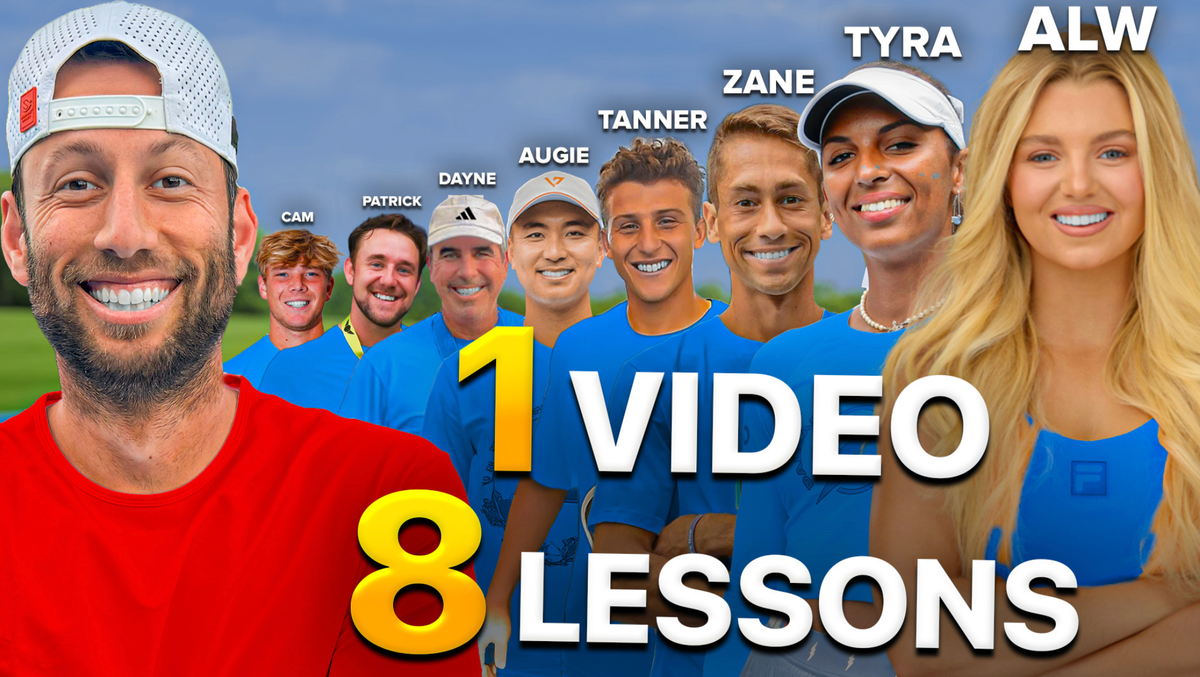
3. Hitting behind your opponent to set up the Erne
This one is rather obvious, as this is pretty much the textbook scenario to setting up an Erne in pickleball.
However, in addition to this working when all four players are at the kitchen, this also works when your opponents are in the transition zone.
- When I am the net with my partner hitting a fourth shot volley and my opponents are working their way forward, I like to hit my volleys down
the line. - This will often result in your opponents hitting a fifth-shot reset or drop back down the line again, which is an easy opportunity for you to try to Erne.
- Worst-case scenario is your opponents hit the shot to the middle or cross court, and your partner steps over to cover.
- Best case, they feed you a free Erne or two, or they miss their fifth shot entirely because you applied pressure by attempting to Erne.
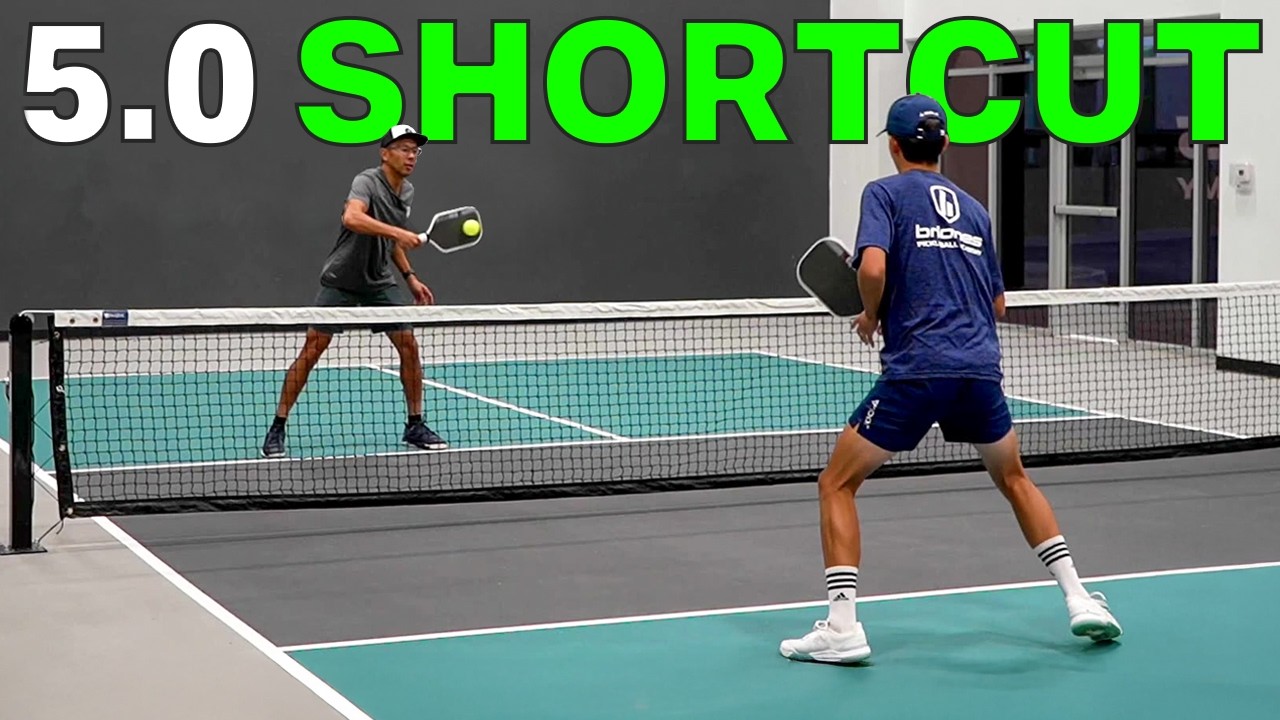
Tyler Loong is a professional player who executes this move to perfection. He will roll his forehand or backhand volley to the opponent across from him, and right as that person goes to hit their fifth shot, he jumps the kitchen and uses his length to reach the ball and hit an Erne.
Anticipation is everything in pickleball. Use these three scenarios to read your opponents and put yourself in a position to make a high percentage, winning play.
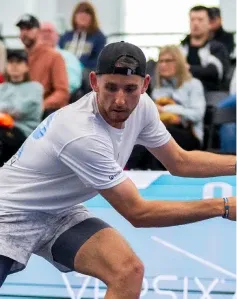
Eric Roddy
Eric is a PPA tour pro living in Charlotte, NC, sponsored by PROXR. In addition to playing PPA events, he teaches pickleball 2-3 hours a week, enjoys golf, and listening to his favorite band Goose.
Love Pickleball? Join 100k+ readers for free weekly tips, news & gear deals.
Subscribe to The DinkGet 15% off pickleball gear at Midwest Raquet Sports






